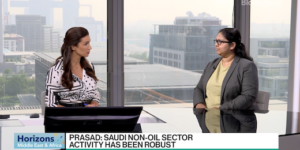Preparing for the next global financial crisis
Public debt in advanced economies rose by more than 30 percentage points of GDP, with total global debt reaching some $250tn by the second quarter of 2018
The Fed’s quarter point rate increase to 2.25 per cent last week is the eighth hike in the past two years, a continuing reversal of the unprecedented monetary easing following the Great Financial Crisis (GFC) as the regulator pivots to a course of higher interest rates and Quantitative Tightening (QT). The GFC had led to concerted efforts to stimulate economies using monetary policy and bailing out of failing banks. The result was a sharp build-up of global debt.
With central banks lowering nominal (and real) rates to unprecedented levels and injecting liquidity through unconventional monetary policies (QE), the world went on a borrowing spree effectively driving up real estate and asset prices on financial markets. Public debt in advanced economies rose by more than 30 percentage points of GDP, with total global debt (including government, household, financial and non-financial corporates) reaching some $250 trillion by the second quarter of 2018. The assets of the world’s largest central banks (US, UK, EU, and Japan) have increased to $15.3tn (an unprecedented 38 per cent of GDP), of which about two-thirds comprise government bonds.
The large global debt build-up now threatens a new financial crisis. Higher interest rates and QT is leading to a growing vulnerability of emerging markets economies. Over $200 billion of dollar-denominated bonds and loans issued by emerging market governments and corporates will mature during 2018 and they will need to repay or refinance about $1.5tn in debt in 2019 and in 2020. Emerging and middle-income countries with high debt levels, large fiscal and current account deficits and US dollar denominated debt maturing over the near term will face rollover risk.
Lessons from the Twin Oil and Financial Shocks of 2008-2009
At the onset of the Great Financial Crisis (GFC) of 2008, banks in the Middle East, especially the GCC, were not highly leveraged and did not have any direct linkage or exposures to the US sub-prime crisis. Financial instruments like mortgage backed securities and other instruments that became toxic assets, were absent from the markets. Ten years later, banks in the region remain well-capitalised, and largely compliant with the latest BIS requirements. Similarly, the region’s financial markets were not directly exposed. The bottom line is that the lack of international integration of the financial markets in the region meant limited spill-over effects from developed markets.
But under-developed domestic financial markets generate an imbalance in regional banks’ US dollar balance sheets. They rely heavily on less-stable funding such as short-term interbank deposits, wholesale sources, bonds and swaps. When the crisis hit in 2008, these sources of funding melted like ice in the desert. Banks and financial institutions found their correspondent bank lines and facilities evaporated. Similarly, the market meltdown meant that sovereign wealth funds and central banks found their ‘liquid assets’ turned illiquid; prices plummeted and there were no counterparts. These financial and liquidity shocks were compounded by the sharp decline in oil prices with the onset of the Great Recession. For GCC economies there was downward pressure on wages, incomes and on domestic asset prices, including real estate, which fell sharply.
But the GCC banking sector was spared a full blown crisis. Policy responses included sustained government spending, lower interest rates (in tandem with the Fed), an easing of liquidity through direct injections in the money market and /or access to new central bank facilities, reductions in reserve requirements and relaxation of prudential loan-to-deposit ratios. Kuwait, Saudi, the UAE and other countries in the wider Arab world introduced deposit guarantees which helped stem capital outflows.
In the aftermath, the GFC did lead to a strengthening of the regulatory framework and oversight in the GCC countries through the implementation of Basel III requirements, which improved risk management and operational efficiency, and the establishment of credit information bureaus to enhance credit risk assessment and management. Room for improvement remains, corporate governance needs to be strengthened further along with greater disclosure and transparency. Strong corporate governance is core to mitigating the microeconomic, internal risks of banking and financial crises.
Another Financial Crisis is Brewing
The next financial crisis will likely be triggered as central banks starting with the Fed end QE and initiate QT. The large overhang of global debt, rising international interest rates along with QT, a contraction of liquidity and credit growth, increase the risk of a recession in 2019. These risks are being compounded by Trumpian trade wars, that can derail the recovery of growth of international commerce and severely dampen investment. The warning signs are there: trade volumes are declining along with dampened business confidence and delays in investment decisions. The expectation of a downturn and recession can trigger a global financial crisis in advance of the downturn.
Three policy reforms can help prepare the GCC countries in advance of the next financial crisis.
- Build local currency financial markets. A major lesson from the GFC and from the Asian crisis, is the danger of over reliance on foreign currency bank financing for cyclical sectors like housing, real estate and long gestation infrastructure investment. Developing local currency financial markets which includes government debt to finance budget deficits, infrastructure and development projects along with housing finance/mortgage market will help the GCC.
- Establish a modern and credible legal and regulatory financial infrastructure: Enhance debt enforcement regimes by decriminalising bounced cheques and building the capacity of the courts; develop insolvency frameworks to support out-of-court settlement and corporate restructuring. Introduce laws to facilitate mergers & acquisitions, as well as securitisation to support the development of asset backed and mortgage backed securities and other structured debt instruments.
- Develop a counter-cyclical fiscal policy tool box for economic stabilization. This requires reforming budget laws to allow for deficit financing, along with the institution of fiscal rules for long-term fiscal sustainability.






